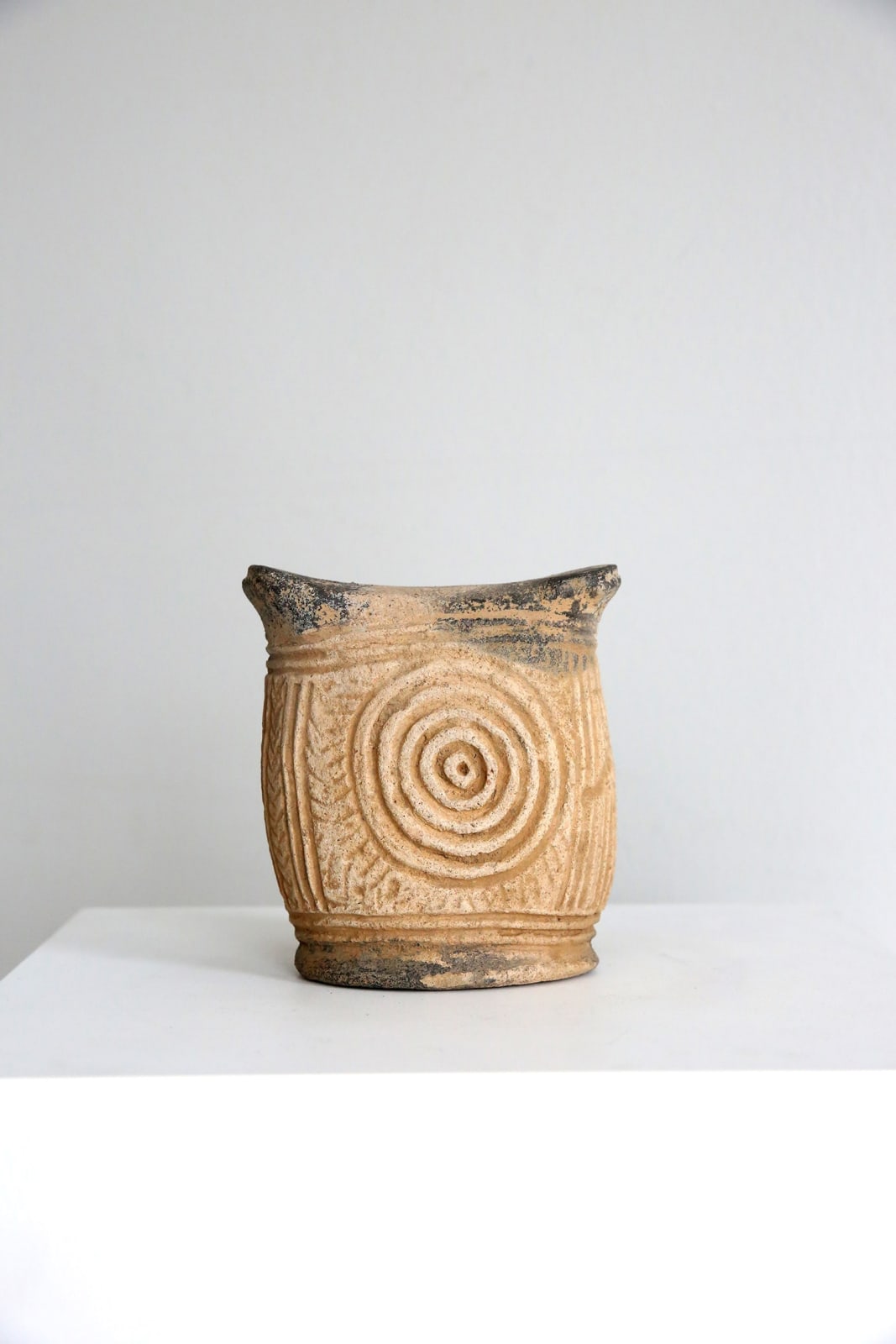Anonymous artist
Terracotta
height 5 1/8 in
This expressive terracotta headrests originates from Eastern Nigeria. During the 20th century many terracotta objects from this culture were discovered during residential construction works and road building in the city of Calabar and its surroundings. Thermoluminescence dating of similar headrests have assigned them to the 10th-11th centuries. While wooden headrests are very well known across many African cultures, these examples are the only known made from terracotta. The head or neck of the owner would be positioned on the rest when sleeping to alleviate it from the ground and protect a complex coiffure. This headrest is finely engraved with geometric motifs throughout. One side is decorated with a large spiral-like motif, while the other side features a large circular opening underneath two holes giving the whole an anthropomorphic appeal. The function of the opening remains a mystery, perhaps the headrest was also a container to store personal trinkets or hold sleep-enhancing herbs or other substances. In addition to such headrests, several other types of objects have been discovered such as platters, bowls, and stylized anthropomorphic figures, always in a distinctive light-brown clay. The question which culture created and used the early Calabar terracotta objects such as the present headrest remains a mystery. The city of Calabar overlooks the Calabar River near its junction with the Cross River, a major waterway that has long been an important conduit for cultural exchange in the region of eastern Nigerian and Western Cameroon. Calabar is home to three major ethnic groups: the Efik, Qua, and Efut, who are in turn each closely related to other cultures located throughout the region, from the Ibibio and Oron in the south to the Ejagham in the North. In this sense, Calabar may be viewed as a cultural microcosm of the entire Cross River region. While each of the three groups claim primacy in its arrival to the Calabar area, none claim to be autochthonous; they each have oral traditions detailing migrations to their present location from elsewhere in the region. Precisely when Calabar was first inhabited is not known. Surviving written evidence indicates that various Efik groups occupying the lower Cross River coast developed regular commerce with European traders in the mid-seventeenth century, if not earlier. Their settlements prospered, in time developing into regionally powerful city-states on profits gained primarily from the transatlantic slave trade. These Efik towns and their hinterlands were known collectively as Old Calabar until 1904 when the name was shortened to Calabar. From the eighteenth to the mid-twentieth century, terracotta pottery was made in the Calabar area by Qua women. However, the Nigerian civil war (1967-1970) ended this production. This pottery was quite different from the archeological material, yet in the trade these headrests have incorrectly been attributed to the Qua.
Provenance
Private Collection, New York, USA
Zena Kruzick, Richmond, USA, -2018
Private Collection, Belgium, 2018-2023



